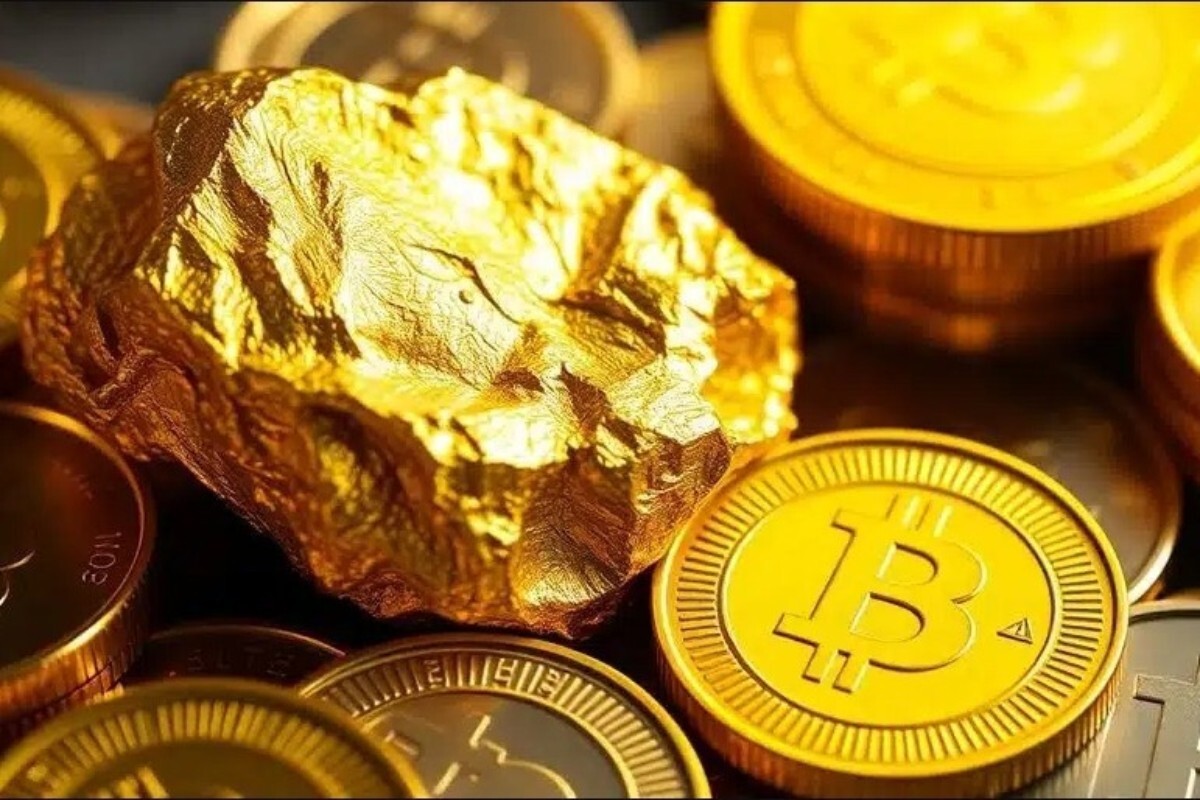Written by: JE Labs; compiled by: Glendon, Techub News
As the core region of the global cryptocurrency ecosystem, Asia accounts for 70% of the world's cryptocurrency liquidity and has 60% of the world's cryptocurrency users. However, there are significant differences in market environment, regulatory policies, and user behavior in Asia, so it is crucial to have a deeper understanding of the characteristics of countries and regions.
This article will deeply analyze the characteristics of the Asian market and provide strategic guidance for eco-builders who want to expand their business in the region. This article covers the following core modules: Asian market overview, user behavior preferences, major market analysis, key market entry strategies, specific Asian country analysis, and how to successfully enter the Asian market.
Asian market overview
Market structure dominated by CEX
37.1% of the world's centralized exchanges (CEX) traffic comes from Asia, ranking first in the world; mainstream centralized exchanges such as Binance, OKX and Upbit form the core liquidity center, and Asian users rely highly on these exchanges for trading, and they are also the main platform for discovering new projects.
Market-driven factors
Financial inclusive demand: In areas with underdeveloped financial infrastructure such as Indonesia and Vietnam, crypto assets have become a key tool for realizing inclusive finance;
Young investors and high yield preferences: Asian young people have higher risk tolerance, which drives growth in decentralized finance (DeFi) and Meme coins;
Regulatory differential pattern: Different regulations form differentiated adoption rates, such as mainland China and South Korea adopt strict regulations and regulations, while Hong Kong and Singapore implement cryptocurrency-friendly policies.
Future trend forecast
First, the compliance process is accelerating. As Hong Kong and Singapore become compliant crypto asset centers, it will undoubtedly promote the transparency process of the entire Asian market; second, regulatory clarity will attract traditional financial institutions to enter, and thus promote the development of DeFi and RWA (real-world assets) tokenization. In addition, the growth in demand for cross-border payments, digital payments and store of value scenarios will also promote the widespread use of stablecoins. In terms of the expansion of DeFi, GameFi and SocialFi, the adoption of decentralized exchanges (DEX) and lending protocols is expected to continue to rise, and Southeast Asia has the opportunity to become the fastest growing region in the fields of Web3 gaming and social finance.
User behavior preferences
Airdrop: Asian user behavior analysis
After airdrops, most Asian traders tend to conduct short-term arbitrage, i.e., sell quickly after the token is unlocked, resulting in large fluctuations in the price of the token. Their airdrop information sources are mainly community-driven, focusing on private domain community communication and sharing, such as WeChat, Telegram, Discord, and X.
These traders' trading behavior characteristics include frequent small transactions and rapid sell-offs. Before airdrop, traders will use small amounts of funds to interact with multiple wallets to increase airdrop opportunities; and within a few hours after the airdrop is released, the airdrop token will experience a surge in trading volume, and the token price will usually fall. This can be verified by the time zone effect, and the selling pressure that GMT+8 time zone (Asia) often occurs at the earliest.
Meme Trading: A craze for speculation among Asian users
As mentioned earlier, Asian cryptocurrency traders are highly dependent on KOL and community-driven and are susceptible to FOMO (fear of missing out) emotions. Therefore, if a Meme coin becomes popular, the funds of these investors will quickly pour into it, pushing up the token price in the short term. During this process, most traders implement high speculative short-term strategies, and the trading logic revolves around the principle of "buy low and sell high". Common strategies include: early entry, quick profit-taking and swing trading, and keeping up with community trends.
From the data point of view, Asia is the largest market for the platform (a website that combines Meme Coin data dashboard and trading tools), with 19% of the platform's traffic coming from Chinese users, which also highlights the strong interest of Chinese investors in Solana meme Coin trading.
Major market analysis
China: Highly active but restricted regulatory market
Despite strict policy restrictions, more than 59 million Chinese users still hold crypto assets; over-the-counter trading (OTC) remains active, and the Hong Kong Special Administrative Region serves as a key portal for inflows of funds through stablecoins. At the same time, Chinese users have strong demand for high-yield products such as Curve and Aave, and the DeFi and DEX ecology are active. In terms of information dissemination, investors rely more on private domain communities (such as VIP paid groups) and cryptocurrency KOL recommendations, which in turn forms a herd effect.
South Korea: Strictly regulated transaction-driven market
South Korea's cryptocurrency trading volume ranks among the world's top, and was once called a "big currency speculation country", among which Upbit Exchange has a market share of more than 80% in South Korea. Korean investors have obvious preference for CEX trading and have low participation in DEX, but the NFT market is relatively active. It is worth mentioning that Meme coins and altcoins are extremely popular in South Korea, especially the Solana Meme coins have attracted a large number of Korean investors.
In terms of regulation, South Korea passed the first crypto asset regulatory framework, the Virtual Asset User Protection Act, in July 2024. The bill puts stricter requirements on digital asset exchanges. Crypto exchanges are required to deposit at least 80% of user deposits in cold wallets to isolate user deposits from exchanges’ own funds. In addition, the exchange must entrust the user's cash deposits to the local licensed bank for custody and hold the same amount and type of cryptocurrency reserves as the customer's deposits.
On the other hand, South Korea will introduce mechanisms to limit fluctuations in token listing and institutional investor access rules in 2025. The Korea Financial Services Commission (FSC) has announced that it will release a comprehensive crypto asset investment guide by the third quarter of this year to allow institutional investors to invest in crypto assets. The guide will regulate cryptocurrency investments in institutional investors, listed companies and nonprofit organizations, which also means South Korea will lift the ban on institutional investors to invest in crypto assets.
Japan: Compliance-driven long-term investment market
Unlike South Korea, Japanese investors have a strong preference for Bitcoin, NFT markets and long-term investments, and the speculation of Japanese investors has decreased due to strict regulation and institutional dominance. In addition, cryptocurrency KOLs and communities also play an important role in Japan, especially the NFT culture has been deeply integrated with local traditional cultures (such as anime culture, etc.).
Thailand: High cryptocurrency adoption and regulatory-friendly market
The penetration rate of cryptocurrency in Thailand (the proportion of Thailand's cryptocurrency users in the total population) is as high as 21.96%, higher than Vietnam and Indonesia, which once ranked tenth in the world in the global cryptocurrency adoption index. Thai investors have strong demand for DeFi, mainly inclined to invest in Bitcoin and Ethereum. The country’s local exchanges dominate, with Bitkub, the largest cryptocurrency exchange, accounting for more than 70% of the market share.
In terms of regulation, Thailand holds a supportive compliance attitude, including defining cryptocurrencies, regulating cryptocurrency exchanges and legalizing stablecoins, among which the Securities and Exchange Commission of Thailand (SEC) identified USDT and USDC as legal cryptocurrencies in March this year. In addition, Thailand plans to launch a cryptocurrency regulatory sandbox program in Phuket in October 2025, focusing on stablecoin applications.
Malaysia: Institutional Investor-oriented Market
Under Malaysia's strict regulatory regulations, all cryptocurrency activities are required to obtain official permission. Among investors in the country, high net worth and institutional investors dominate, which also prefer Bitcoin, stablecoins and DeFi markets. The country's main exchanges are Luno (regulated local exchanges) and Binance.
Asia Crypto Markets Comparison by JE Labs
Key GTM strategies
The GTM (Go-To-Market) approach is a business strategy designed to plan how a company brings its products or services to market and attracts customers. The key to the project issuer's successful promotion of Web3 projects in the Asian market is precise localization strategies and community penetration.
First of all, localization is the key to opening up the Asian market. Since Asia is not a single market, but a complex of multiple cultural, linguistic, and regulatory environments, it is necessary for each country's cultural and regulatory environment to tailor market entry strategies. For example, localized narrative uses content that resonates with local users and is easily disseminated. In terms of information dissemination, content localization is equally important, and information needs to be translated accurately and adjusted to adapt to the habits of local users. The social media channels are China (WeChat, Weibo), South Korea (KakaoTalk, Naver), Japan (Line, CoinPost) and Southeast Asia (TikTok).
Second, Southeast Asia, South Korea and Japan have high acceptance of GameFi and NFTs in terms of regional ecosystem integration, so they are ideal for gaming and NFT-related projects; China is well suited for fintech and DeFi applications, while Hong Kong and Singapore in China can act as compliance portals. In addition, project publishers also need to segment users, and different markets require different ICPs (ideal customer portraits), such as institutional clients (B2B), retail investors (B2C), and developers (B2D).
Community-driven is the core way to gain user trust, including community-driven trust construction and expanding market influence through KOLs:
Deep local integration: regular contact, active community engagement and long-term trust establishment;
Early user incentives: issue NFT or airdrop incentives to maintain user stickiness and loyalty;
Continuous participation: Organize AMA, continuously produce content and maintain high community activity.
Partner with KOL: Local KOLs have a huge influence, and collaboration can increase credibility and target users accurately with tweets, community marketing and KOL partnerships.
Analysis of specific Asian countries and how to enter the Asian market
China: Accurate positioning and private domain traffic growth
With Hong Kong as a compliance portal, connect global and mainland markets;
Cooperate with KOL to increase influence by combining the traffic of WeChat community.
South Korea: Transaction-driven, CEX is the key
Listing on local CEX (especially Upbit) will change the rules of the game and directly affect market trust;
Build a community on KakaoTalk and Telegram and work with KOLs to increase project visibility;
Media exposure is more important than community management, the former can improve credibility.
Japan: User experience and organizational preferences are the main
High net worth users prioritize UX/UI experiences and local NFT culture over airdrops;
Use well-known media such as CoinDesk Japan and CoinPost to expand their influence;
Work with Web3 organizations such as Bitget Wallet to reach target users.
Southeast Asia: DeFi and GameFi have great potential
Indonesia: Best results with P2E and fiercely airdrop-based viral growth strategies.
Vietnam: A developed Web3 gaming ecosystem is ideal for in-depth expansion of GameFi.
Thailand: Transparent policies, rich DeFi opportunities, suitable for local promotion.
Philippines: The token economy is highly integrated with gaming and pop culture, resulting in higher adoption of NFTs.
Malaysia: DeFi adoption rate is continuing to grow, and the stablecoin and lending markets have great potential.
To sum up, if you want to explore the Asian market, the project issuer must anchor the correct target market and define the ICP. The key is to accurately implement localization strategies and community penetration, and to have an in-depth understanding of regulatory policy orientations and communication channels. For example, China, South Korea, Japan and Thailand mainly focus on transaction users, Southeast Asia such as the Philippines, Vietnam and Malaysia are more suitable for DeFi, GameFi and P2E growth strategies, while Hong Kong and Singapore can serve as compliance portals and fund flow channels for projects. It should be clear that in the context of the generally long life cycle of Web3 projects, the project party can retain users more than short-term hype.
















No comments yet